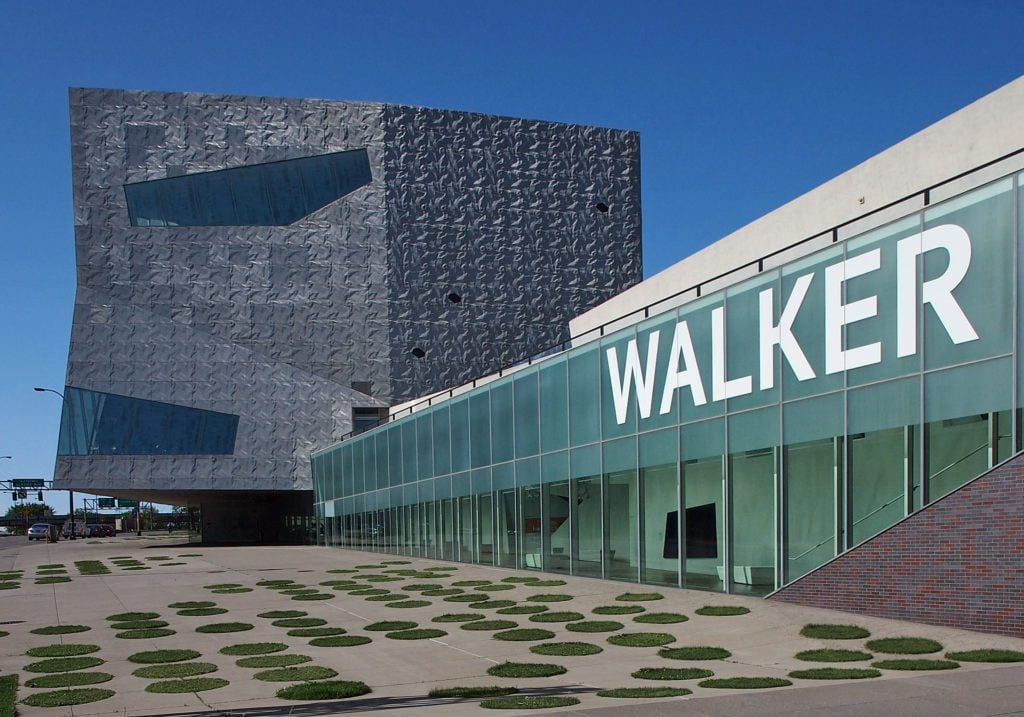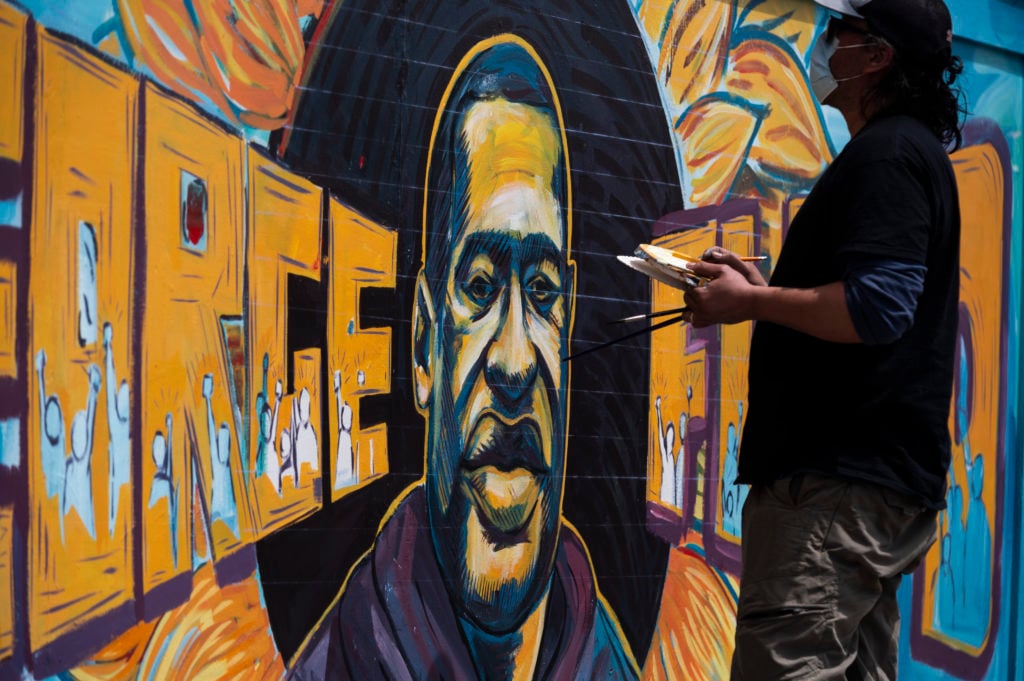Art World
As Activists Call for Greater Accountability in Law Enforcement, Some Are Exposing Museums’ Little-Known Ties to Police Departments
Museums occasionally hire police officers for security, a practice some activists want stopped.

Museums occasionally hire police officers for security, a practice some activists want stopped.

Eileen Kinsella

In the days following the murder of George Floyd, who was killed when a police officer knelt on his neck for nearly nine minutes, both the Walker Art Center and the Minneapolis Institute of Art swiftly cut ties with the Minneapolis Police Department.
“Enough is enough… George Floyd should still be alive. Black lives matter,” read the Walker’s statement.
But will other museums follow suit? Some activists are now examining the ties between cultural institutions and local police departments and pressuring others to take similar action.
“Policing is an inherently racist system,” said a representative for the Museum of Contemporary Art Chicago’s youth development group, Teen Creative Agency, which is leading calls for more transparency about the institution’s ties to the city’s police department. “So when you have police or policing practices in museums, you are actively making POC feel unsafe and unwelcome in that space (as well as people with disabilities, people who are undocumented, etc.). Museums are cultural institutions that are supposed to empower the people in their communities, so excluding marginalized groups through policing is fundamentally not aligned with those values.”

A group of artists paint a mural of George Floyd on the wall outside of Cup Foods, where Floyd was killed in police custody in Minneapolis. Photo by Stephen Maturen/Getty Images.
The group’s petition on Change.org, posted June 3, has garnered just over 2,600 signatures. In response, the museum’s director, Madeline Grynsztejn, clarified the institution’s relationship with the police department: “Our historic relationship has been solely to work with them to ensure the security and safety of our staff and visitors,” she wrote. “The MCA maintains an ongoing relationship with the CPD similar to any other museum or business… Moving forward, we will ask [the museum’s security service] to alert me should the need arise to work with CPD in any capacity other than normal business procedures.”
A group of activists have launched a crowdsourced public spreadsheet with details about the nature of many museums’ relationship with police departments. The document was made available by the project Arts for Abolition, which seeks to “amplify existing efforts to defund and dismantle the police.”
An entry about the Metropolitan Museum of Art in New York, for example, says that the institution “has increased visible presence of police on Met steps due to footprint in Central Park and concerns over terrorism: at security intro meeting we were told to expect to see armed men patrolling outside the museum at random. The Met also works with NYPD for logistical issues, such as anything that might require Fifth Avenue blocked off.”
The Metropolitan Museum did not respond to a request for comment.
The spreadsheet also notes that Benjamin Winter, Ian Highet, Mark Kingdon, Alexander Tisch, and David Winter are board members of the New York City Police Foundation, whose aim is to “support the NYPD as it strives to reduce crime efficiently and effectively,” and who have also given donations of some kind to the Met. (A representative for Arts for Abolition noted that the Met’s 2018-19 annual report indicates that Benjamin Winter and Highet have given annual support of $1,500 or more. David Winter is listed as being a member of the chairman’s council, though it’s unclear what level of giving that indicates.)
New York’s Museum of Modern Art, meanwhile, is said in the document to hold a contract with the NYPD that began in 2015 and involves officers being stationed in the lobby. “Apparently senior staff is concerned about the growing sentiment among MoMA staff for the museum to divest from the NYPD,” a user wrote in the spreadsheet. “Their current line is that ‘it’s a class issue,’ because many MoMA security officers have friends or family who work for the NYPD.”
MoMA did not response to questions about the information in the spreadsheet.
The nonprofit Pioneer Works in Brooklyn offers free event space to the New York Police Department for police conferences, the document noted.
“Over the years, Pioneer Works has periodically made our space available to Red Hook neighborhood organizations to use at no cost—including the local police precinct, the Red Hook Justice Center and Friends of the Firefighters—in an effort to promote community dialogue within our walls,” executive director Eric Shiner told Artnet News. “Moving forward, each request for the use of our space will be even more carefully considered based on the ideals of an organization and how it helps our community to grow and prosper.”
Some activists are looking to go beyond asking museums’ to stop hiring police officers for security. The Teen Creative Agency representative said that they are also “working on creating reparations and solidarities for past interactions with the Chicago police department by establishing relationships with grassroots organizations and the creation of an equity board. As of now, there are no current ties with CPD, but it is still critical to us that we discuss and process past actions involving the MCA. We hope to set an example to other museums and institutions on this practice.”
UPDATE, June 24, 2020: A previous version of this article incorrectly stated that Benjamin Winter, Ian Highet, Mark Kingdon, Alexander Tisch, and David Winter were board members of the New York Police Department when they are in fact board members of the New York City Police Foundation, an organization that “provides the department with strategic resources beyond the normal budget that help innovate and strengthen police services,” such as funding new technology and equipment for officers.